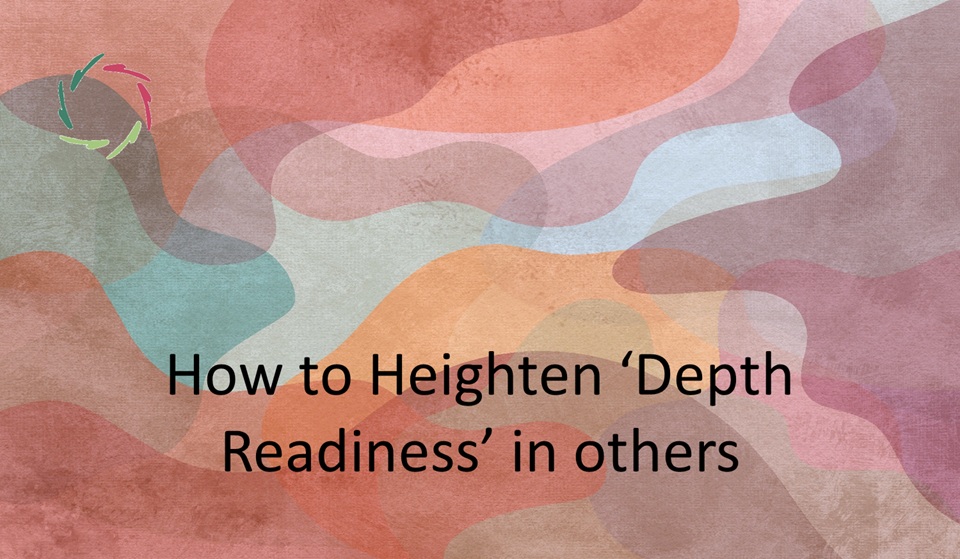True Science

… and thus not what is often seen as such. And which in turn is being thrown in the trash by others, mainly in an effort to make oneself be seen.
Science is being used and crushed for the same reasons.
True science begins and ends with devotion and is devotion all the time. Firstly this is an attempt to start as little as possible from presuppositions.
True science does not allow to be guided by wishful thinking, nor by a fear to hurt one’s own feelings.
Even not by fear of having to renounce a world model, even though that can be the basis on which one’s own personality is built, or is holding on to. So true science may seem ‘hard’, in the first place for the scientist himself. A humanly hard attitude can make this ‘toughness’ really hard. A firm attitude, on the other hand, can connect the toughness to gentleness. So this is not a question of the thing in itself, but of the way people handle it.
In addition to this, true science is always a devotion to doubt.
This is not the doubt of emotional despair. Scientific doubt is intellectual: a never fully knowing for sure, since the instrument of knowing itself is always limited.
A little warning: this doubt is not a weakness, but it can be seen as such by people who have no idea of real science and come up with a statement like: “See! You don’t know it either”. Now then: there is no choice between true science and no true science. There is a choice though between true science and something totally different, namely: the misleading of people.
Pursuing true science means giving in to common sense.
The first thing common sense does, is being very critical in relation to itself.
Practicing true science means giving in to ‘intuition’.
Or to ‘parallel thinking’ if you want. It means constantly discovering further paths, or even very new paths. This is not just a logical-constructive attitude, but the combination of this with a meditative attitude. This is: a way of thinking that can work with wide patterns that can occur in the deeper self if one invites this and gives in to it. A true scientist dares to bring things together that have at first sight little to do with each other. Even if, as we can see in the fragmented world we know, a lot of people and organizations invest heavily in the individual things and may also stand up to the possible disappearance of their snips.
A true scientist differentiates but also creates unity.
He does not distinguish due to ‘political’ reasons, that is to say: from the motive to elevate himself as scientist. ‘Divide et impera’ (divide and rule) is not in his nature. The current mental health care is a clear negative example of dividing and ruling: by creating more and more boxes, one tries to gain control over something that, in principle, resist this control, namely: the deeper self.
The distinction that a true scientist is looking for, is a distinction from within:
because there is no other way, because it spontaneously stems from unity. One can also notice this in its purpose: it’s not the intention to control the world around, but to be part of it and evolve with it, to ‘grow’. In mental healthcare for example, one could look for distinction from the deeper self. That would give a very different picture.
The unity that a scientist is looking for, is also a unity from within:
because there is no other way. Two rather rare phenomena are coming together here, namely true religion (re-ligare) and true science (which is already a unification in itself). Interesting in this context is that the great “enlightened” scientists during and after the Renaissance (such as Galileo, Bacon, Spinoza, Newton, Kepler and even Descartes…) were in the first place looking for a religious action and they also saw religion in their own science. This is not always being rightly valued in scientific books.
A true scientist is in the first place even looking for bringing things together.
Which is something else than the technology that results from it. For example: the genius of Einstein brought the concepts of matter and energy together in one equation (E = mc ²). First application of this action: the atomic bomb. Another application: Einstein was quoted incorrectly to ‘prove’ that one can fold spoons from a distance or that one can ‘cure’ others, or that one can ‘create’ one’s own material reality’.
Doing true science , means giving in to hard work when needed. Edison did not invent the light bulb after a few tries, but after 8000 (eight times thousand!) tries with different materials. A layman often has no idea how much human energy (motivation) it takes to practice true science. Scientists often have a breakdown themselves and they sometimes become careless or they stop their thinking or investigation in a premature stage. For example: what is now seen as a very serious but very common ‘error’ is that experimental researchers start their experiments before having everything thoroughly reflected upon, which makes that they are trying to cover up their shortcomings with some statistical burble. Put on top of that a dose of wishful thinking about what the results should be and the true scientific content promptly is woefully low.
There is an element of truth in the phrase ‘statistics can prove anything’ … if you abuse the statistics.
Again, the result doesn’t depend on the numbers, but on the people. So:
ALWAYS THINK CRITICALLY!


